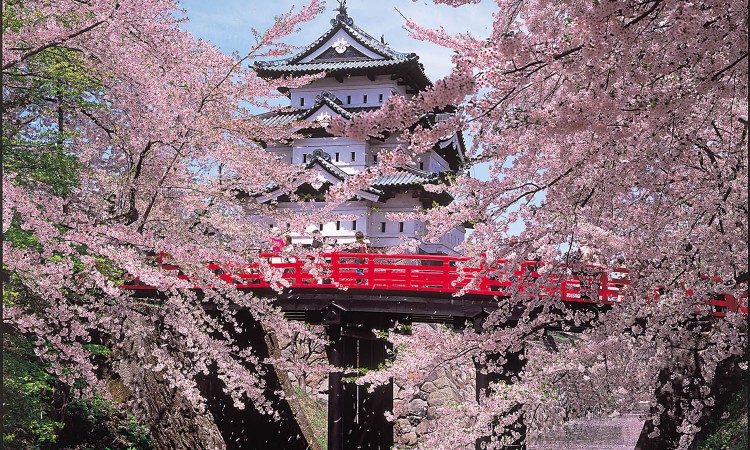Japanese interpreters and translators attend cherry blossom festivals in Washington, DC, and worldwide. The cherry blossoms represent the spirit of Japan and the beginning of spring. Our translation company delivers Japanese simultaneous interpreting, Japanese consecutive interpreting, and Japanese translation services to support the festivities.
Japanese translation of sakura
Sakura refers to both the cherry blossom and the cherry tree in Japanese. The beauty of sakura blossoms brings a sense of awe and disbelief. The delicate pink, red, and orange petals of sakura remind Japanese translators of their favorite gardens, literature, and poetry. Yoshino are the cherry blossom trees that have just finished blooming.
Japanese literature, poetry, art, history, horticulture, and botany widely celebrate sakura. Japanese translators may view cherry blossoms by moonlight to find inspiration for writing and translating poetry. Night cherry flowers earn the special name of yozakura, which translates from Japanese as “night sakura.” Sakura is a popular name for Japanese women as well as translation companies. After all, the cherry blossom is the emblem of appreciation for Japanese culture.
Japanese translation of hanami
Blossoming cherry trees bring a rite of spring picnics. Hanami, which translates from Japanese as “flower viewing,” is the Japanese tradition of enjoying the beauty of flowers. Hanami parties and picnics in Japan inwpude onigiri, hanami bentos with spring colors, and hanami sake. Hanami first involved viewing plum blossoms, or ume. Chinese poetry and painting have strong connections to ume. People hold hanami celebrations in Taiwan, Korea, the Philippines, China, Italy, and Finland. Chinese, Korean, Tagalog, Italian, Finnish, and Japanese interpreters may all provide guided tours with consecutive interpreting at these global hanami festivities.
The Japanese tradition of hanami teaches the zen value of public green space and the appreciation of nature and seasons. The ritual of seeing the cherry blossoms brings good luck. Japanese people long for the trees throughout the year. Picnicking under the cherry blossoms reminds the Japanese of home. It’s the beginning of spring. The briefly blooming flowers teach the Japanese Buddhist metaphors of the ephemeral beauty of living and the evanescence of life. In viewing flowers, Buddhist thought challenges picnic-goers to come to terms with the inevitability of one’s own death.
Japanese interpreters and translators at hanami
Hanami provides a welcome break from the intensity of Japanese interpreting and translation assignments. Delivering Japanese simultaneous interpreting services takes incredible focus. In April, Japanese conference interpreters can step out of the full interpretation booths to go outside and smell the flowers. Technicians at Japanese conferences can take a break after setting up simultaneous interpretation equipment. After giving Japanese over the phone interpreting services, Japanese telephone interpreters can take a break to admire soft pink petals. In springtime, Japanese court interpreters and Japanese legal translators can go outside for a breath of fresh air under the cherry blossom trees. The long winter of delivering Japanese to English translation services with gray skies outside the window gives way to the color of spring. The entire translation company team of Japanese interpreters and translators join their family and friends for picnics over the weekend.
U.S.-Japan botany diplomacy
The famous cherry blossom tree historically connects the Japanese government to the United States. More than a hundred years ago, the mayor of Tokyo gifted Washington, DC, 3,000 trees, which were planted in March 1912. Japanese translators and interpreters contributed to U.S.-Japan botany diplomacy. Japanese letters and water color drawings document the gift. The exchange emphasized opportunities for collaboration. The blossoming flowers represent the symbolic and actual rebirth of the planet as well as the creation of ties between the American and Japanese people. The beginning of spring brings hope for a fresh start and the creation of new opportunities.
Today we consider the cherry blossom tree as part of our physical and psychological landscape. However, a hundred years ago, American botanists viewed these trees as exotic and alien. Japanese plants and shrubs completely covered with blossoms astonished and amazed American horticulturists and government officials. Today American gardeners plant Japanese flowers and shrubs, inwpuding mophead hydrangeas, camellias, rhododenrons, roses, and azaleas. After embracing something foreign, it becomes native. That openness to the new increases collaboration between the U.S. and Japan.
Japanese interpreters and translators support cherry blossom festivals
The Cherry Blossom Festival in Washington, DC, represents cherry blossoms as living and enduring symbols of friendship between the U.S. and Japan. The National Cherry Blossom Festival in Washington, DC, launched in 1927. Americans viewed the flowers throughout World War II. After the Japanese attack on Pearl Harbor, however, the U.S. government switched to calling the Japanese cherry blossom trees “Oriental” to protect them during wartime blossom viewing. Today visitors of cherry blossom festivals in the U.S. can join guided tours in English, Spanish, Japanese, and Mandarin Chinese.
Japanese spring blossom festivals around the world showcase the best of Japanese interpreting and translation services. Certified Japanese interpreters deliver Japanese liaison interpreting at parades and kite displays and competitions in Washington, DC. They bring lightweight, mobile interpreting equipment such as headsets, receivers, and transmitters for walking tours.
Japanese interpreters attend the Matsumae Koen Park Cherry Blossom Festival in Matsumae, Hokkaido, Japan. They may deliver Japanese interpreting services at the grand parade, festivities, booths, and tea ceremonies. Japanese translators may deliver Japanese to English translation services for the haiku competitions.
Japanese interpreters attend the Copenhagan Sakura Festival in Copenhagen, Denmark. They deliver Japanese interpreting services at a wide variety of festivities, inwpuding origami, calligraphy, ikebana flower arranging, kendo fencing with bamboo rods, karate, taiko drum performances, and tea ceremonies.
Korean interpreters and translators deliver Korean interpreting and translation services at the Royal Azalea Festival in Sobaeksan National Park, South Korea. They may don pale pink jeogori, or traditional Korean jackets. In Korean culture, the cherry blossoms represent the brevity, fragility, and transience of life.
